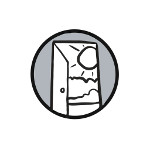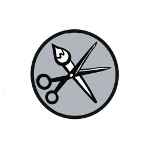Activities - Nests, Eggs and Life Cycles
 1. Complete the nest challenge
1. Complete the nest challenge
Try to build a nest like a bird, using only your beak (some kitchen tongs) and feet.
a) Was it hard? What were some problems you had?
b) Write a comic about what your life would be like if you had wings instead of hands. How would you get dressed? eat? go to school?
 2. Drawing birds
2. Drawing birds
Draw life sized birds and their eggs on your driveway! To do this you will need a ruler or measuring tape and chalk.
Draw Australia’s tallest bird:
Emu = 1.80m long (remember there are 100cm in 1m)
Its egg = 13cm long, 9cm wide
Draw Australia’s smallest bird:
Weebill = 8cm long
Its egg = 15mm long, 11mm wide (remember there are 10mm in 1cm)
Label your drawings so people walking past can learn too. You might like to research the world’s tallest bird and add to your drawings.
 3. Design a nest box
3. Design a nest box
Steve the Kookaburra needs a nest box. Design it, making sure it has the following requirements.
- Will fit a 42cm tall kookaburra and have room for chicks. Show your measurements.
- Has soft things to keep the chicks warm.
- Includes a door that is 20cm wide and 15cm tall.
- Has a way for rain to run off the roof.
- Is to be between 5 and 10m high in a tree.
Draw the tree and where you would put it. How will you stop goannas, cats and rats from trying to climb the tree? Will you camouflage your nest box? How?
Make sure you label your design to help explain your choices.